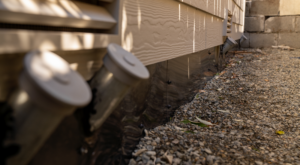How it works
Build better with Ground Frame.
Proven foundation innovations

Timber and steel foundation products perfect for many projects.
- 1-2 story frame buildings without basements
- Crawl space or slab on grade (ADA friendly)
- Wood frame (Type V/Vn) or steel studded construction
- Flat, terraced or sloped sites up to 3:1
- Minimized excavation, low impact construction
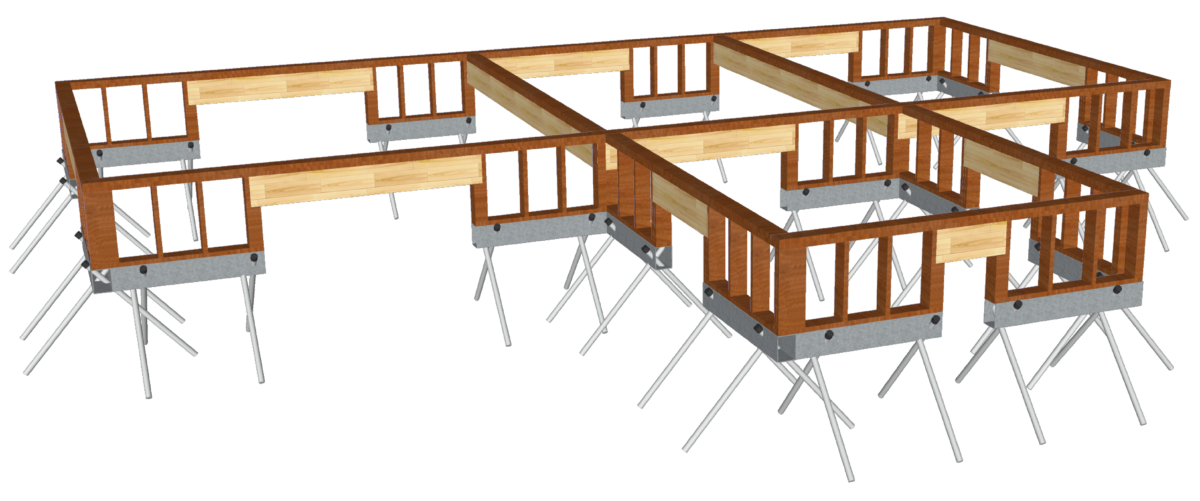
The technology
Leverage the Earth’s strength
The ground should be considered your first building material. The Ground Frame foundation provides a solid, stable and efficient foundation that captures and preserves the supporting strength and natural functions of the Earth’s soil.

No Digging
No site disturbance.No heavy equipment.
No Pouring
No form work.No pump truck.
No Backfill
Site stays clean.No hauling dirt in or out.
No water issues
Skip the need for sitewater remediation plans.
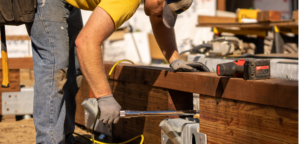
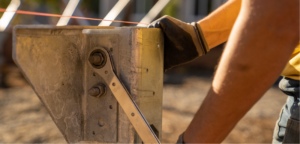
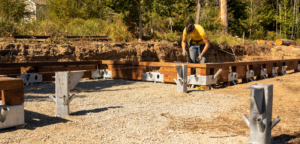
For your project
Foundations don’t have to be complicated.
Get started with Ground Frame by answering a few simple questions about your site and project.
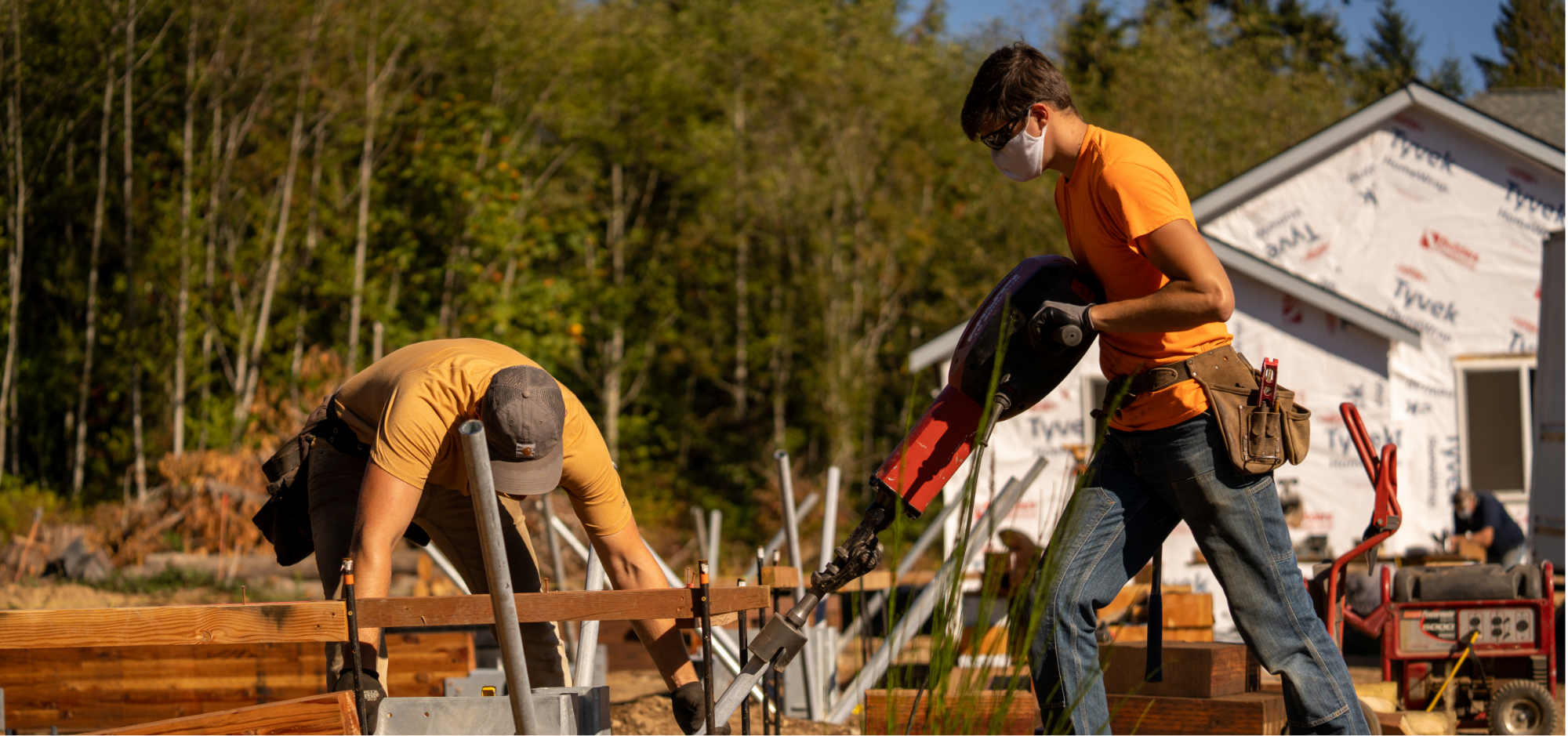
Answer a few questions
What’s the site slope?
What’s the floor height?
What’s the perimeter finish?
Gather engineering info
Gather the soils information.
Calculate project size & loads.
Work with Pin Foundations to specify the perfect approach for your project
Permitting and Project Services
Proper foundation design requires a knowledge of project soils, loads, and connection detail. Pin Foundations offers Project Services to properly specify the appropriate product(s) for the project. Site-specific geotechnical information, including soil description, phi angle, in-place weight, and cohesion, is required along with structural engineering specifications, detailing bearing, uplift, and lateral loading. With this information, PFI is able to provide a Manufacturer’s Capacity Report showing capacities for the foundation components in the project soil. This information also serves as the basis for engineer-stamped reports and submittals for design review and permitting.

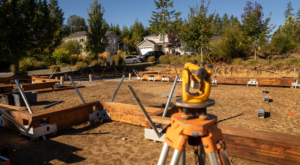
Why is a Geotechnical Report Needed
for Design and Permitting?
PFI’s technology is based on soil mechanics and geotechnical engineering principles. Tributary (bearing, uplift, and lateral) capacities for projects are calculated based on the interaction of the soils and the inclined bearing pins.
Soil composition (bedrock, gravel, sand, clay, etc.) varies widely from region to region and even from site to site within the same project location. Because of this variability, PFI requires a project-specific geotechnical report to ensure that the soils are suitable (appropriate strength and fully penetrable) for our foundations. This soil information is the basis for capacity calculations and for the engineer-stamped reports that are often required for permitting projects.
If you have questions about what is required for proper design and permitting in your location, we recommend that you work with a design professional and consult with local building officials.
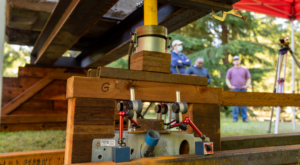
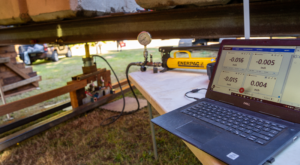
Professional Design or DIY: What Are the Requirements?
We all want to find ways to build more efficiently and to keep costs down. PFI designs all of our solutions with this in mind. A primary advantage of all PFI’s products is the intuitive, labor-efficient installation that requires very little site preparation, no training or certifications, and only the use of common hand tools. When it comes to installation, there is no more efficient and lower-cost foundation solution.
Proper foundation design requires an understanding of soils, loads, and building codes. For simple structures, such as residential decks, builders and DIY homeowners are able to select from load charts and provide evaluation reports for permitting. For all other uses, including cottages, cabins, small homes, ADUs and one- or two-story residential / commercial structures, professional design services and engineering are required for proper specification. The soils and loading information are also the basis for the engineer-stamped reports commonly required for permitting.
So yes, our products are perfect for the DIY installer but professional design support and engineering is required.
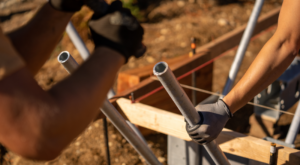
What About Structural Engineering?
Proper foundation design takes into account the loads of the structure. Structures of all sizes have vertical (bearing and uplift) loads and most have lateral (shear) loads. Some can have overturning (moment) loads. These loads are passed into the foundation and then into the project soils.
The structural design, building materials, and environment (i.e., high wind, snow load, frost depth) all have to be considered when calculating loads. Structures can have some areas where loads are concentrated and other areas where the loads are spread out. Based on the structure, these loads may be handled by a continuous/semi-continuous foundation like the Ground Frame Beam or Ground Frame Saddle. Or the loads may be handled by a stanchion or pier in the case of the Ground Frame Column or the Diamond Pier.
Structural engineering is required to ensure that the loads of the structure are known at the foundation interface.
